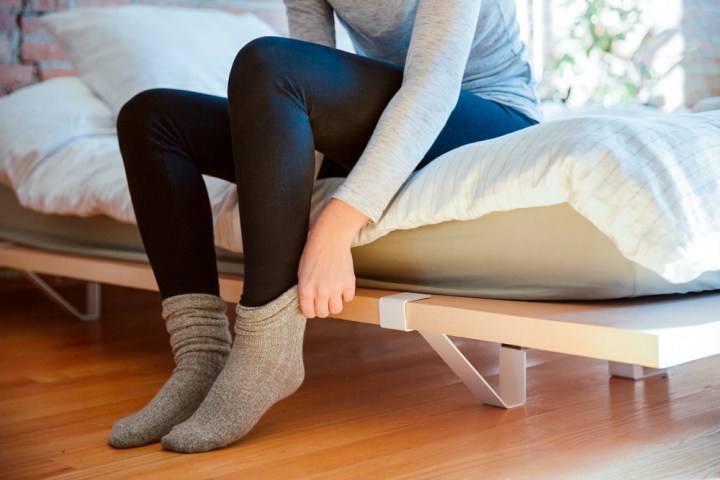
Perhaps taking the idea of nature’s calling a bit too seriously, the scientists utilized microbial fuel cell technology in their unusual creation. Microbial fuel cell technology refers to a process by which bacteria turns fluid waste into electricity. When you walk about in your urine-filled high-tech socks, you force around 648 milliliters of your pee through integrated tubes and into microbial fuel cells (MFCs), which in turn create electricity.
Don’t worry — the team doesn’t expect you to just pee into your socks. That would be disgusting. Rather, these next-generation foot warmers contain a number of squishy silicon tubes along the heel, which in turn are connected to the MFCs, located close to your ankle. When you walk, you literally force the urine towards these MFCs, and in lab results, this created enough power to wirelessly send the message “World’s First Wearable MFC” once every two minutes. Gross, but kind of impressive, maybe.
“We wanted the system to be entirely self-sufficient, running only on human power — using urine as fuel and the action of the foot as the pump,” said team lead Professor Ioannis Ieropoulos. “This work opens up possibilities of using waste for powering portable and wearable electronics.”
Praising the ingenuity of the project, University Technology Corporation researcher Heather Luckcraft (who was not involved in the study) noted, “There is a boom in wearable electronics, and the ability to make biological fuel cells that are flexible and wearable takes the application to the next level.”
Who knew that level involved quite literally peeing on yourself.
Don’t get too excited yet, though. If you’re looking for a Christmas present, these won’t be ready in time. But at the very least, Professor Ieropoulos comments that these socks “open up possibilities” for the future of MFCs. “Having already powered a mobile phone with MFCs using urine as fuel, we wanted to see if we could replicate this success in wearable technology,” he said.
Successful it has been. Adoptable, we’ve yet to determine.


